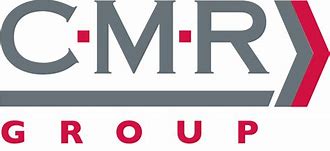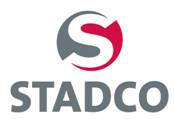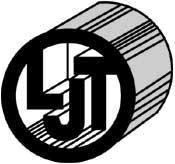Title Page
-
Audit Title
-
Client / Site
-
Conducted on
-
Prepared by
-
Location
General
-
Are hazard signs used to warn and identify hazards?
-
Is the OSHA 300a signed and posted between 1 Feb and the end of April?
-
Are Emergency numbers posted by phones?
-
Are workplace injuries and illnesses being recorded on the OSHA log?<br>
-
Is the Department of Labor poster posted (OSHA Poster)?
Hazardous Communication
-
Are chemical containers closed and stored properly?
-
Are all chemical containers labeled with the contents?
-
SDS sheets available for all chemicals?
-
Is chemical inventory up to date?
-
Are incompatible chemicals stored separately (eg., acids stored separately from bases, oxidizes separate from flammable)?
Fire Protection and Prevention
-
Are exit lights properly illuminated and emergency lighting operable?
-
Are fire aisles, exit ways, stairways, and fire equipment kept unobstructed?<br>
-
Are all fire extinguishers and/or hose stations clearly identified?
-
Are all fire extinguisher fully charged, tagged and are tags up to date?
-
Are fire extinguishers adequate in number and type?
-
Are flammable chemicals stored in approved containers?
-
Are fire proof safety cabinets used for storing of flammable and combustible chemicals?<br>
-
Are flammable storage cabinets labeled with " Flammable-Keep Fire Away"?
-
Are sprinkler heads protected by metal guards?
-
Are sprinkler heads clean and no storage within 18 inches?
-
Are combustible metals kept at least 35 feet away from welding operations or open flames?
-
Are flammable gas cylinders and oxygen cylinders separated by 20 ft, or by a 5 foot barrier that provides for 30 minutes of burn time?<br>
-
Are covered metal containers used for oily rags and paint soaked waste?<br>
Hazardous Waste
-
Are waste storage areas (bins and totes) designated?
-
Are waste containers properly labeled(chemical components)?
-
Are waste containers compatible with waste to be stored?
-
Are only compatible chemical waste stored in the same container?
-
Are waste containers kept closed except when adding waste?
Fall Protection
-
Are employees working 4 ft (general industry) and 6 ft (construction) off the ground?
-
Are employees protected from falls by the us of a guard rail system, safety net system, or personal fall arrest system?
-
Are tools and material protected from falling down to lower levels?
-
Are employees trained in fall protection?
-
Are harnesses inspected by a competent person before each use?
-
Are harness being worn properly?
-
Are lanyards in good condition and have been inspected?
-
Are employees tied off to proper anchor points?
-
Are guard rails and toe boards properly constructed?
Compressed Air and Compressed Gases
-
Are air compressors equipped with pressure gauges and pressure relief valves?
-
Are compressed air piping, hoses and fittings in good condition?
-
Are all compressed gas cylinders adequately secured with non-combustible restraints to the cylinders to prevent them from falling, and are they being capped when not in use?
-
Are Gas Cylinders legibly marked as to their contents and stored away from high heat? Flames, etc.?
-
Are Gas Cylinders transported on cylinder carts?
-
Are empty gas cylinders labeled "empty," valves closed, and caps on?
-
Are the proper type of regulator used for the type of gas cylinder in use?
-
Are Oxygen and Acetylene in storage separated by 5' noncombustible barrier?
-
Are cylinders capped when not in use?
Confined Space
-
Are all confined spaces and permit required confined spaces identified?
-
Are all confined spaces properly labeled " Danger Confined Space- Do Not Enter"?
-
Is there a written confined space program?
-
Are permits provided and filled out for Permit Required Confined Space Entry?
-
Have confined space entrants and attendants been properly trained?
Electrical Safety
-
Are all electrical panels labeled with the appropriate voltages?
-
Is a 3 foot area around all electrical panels kept free of obstructions?
-
Are all electrical equipment and power tools properly grounded or double insulated? (Ensure founding pins have not been removed and 3- pin to 2-pin adapters are not used)
-
Are electrical tools and equipment used near wet areas protected with GFCI?
-
Are portable GFCI used when electric power tools are used outdoors?
-
Are all extension cords and power strips in good condition (no breaks or exposed wires), used only as temporary wiring(<30 days), and not connected in series, plugged directly into wall outlet?
-
Are electrical cords prevented form running under carpets, through doorways, stairways, and high traffic areas?
-
Are outlets, switches and junction box covers in place and good repair?
-
Are outlets overloaded?
-
Are energized parts, circuits, and equipment guarded against accidental contact?
-
Are electrical tools and equipment used in or near wet areas (such as sinks) protected with a GFCI (Ground Fault Circuit Interrupter)?
Forklifts and other equipment
-
Are forklift drivers, aerial lift operators certified and trained?
-
Are documented daily (before use) inspections of forklifts, aerial lifts, etc. kept on file?
-
Are only trained and authorized personnel permitted to operate forklifts and/or aerial lifts?
Floor & Wall Openings and Runways/Catwalks (with 4 ft or more to next level)
-
Are Floor openings properly guarded, (railings, toe boards) or covered?
-
Are Skylight floor openings guarded with screen or guardrails?
-
Are Wall openings (including chutes and chases) properly guarded?
-
Are Toe boards on wall holes if wall hole less than 4 inches above floor?
-
Are Runways guarded by standard railings on all open sides?
-
Are Toe boards on runways when tools, materials, or parts will be used?
Hoists, Cranes & Slings
-
Overhead hoists/cranes with limit stop for safe highest and lowest travel?
-
Is Hoist/crane's rated load legibly marked and visible to operator?
-
Hoist/crane drum has minimum of 2 wraps at lowest range of motion?
-
Are Hoist/crane chains, ropes (cables), and hooks in good condition?
-
Does Competent person inspects slings for damage/defects each day before use?
-
Are Damaged/defective slings immediately removed from service?
-
Are Slings permanently marked or coded to indicate rated capacity?
-
Are Slings not used in excess of rated capacities?
-
Are Loads not allowed to be carried over people?
-
Are Operators trained in the proper operation of hoists/cranes?
-
Are crane and hoist operators, and riggers certified and trained?
-
Are documented daily (before use) inspections of cranes, hoists and rigging (including nylon & wire slings) kept on file?
Ladders & Scaffolding
-
Are fixed ladders that are accessible to the public secured from unauthorized use?
-
Are ladders free of sharp edges, splinters, cracks, with no loose rungs or steps? Properly stored?
-
Do fixed ladders over 20 ft from landing have cages, wells or fall arrest systems?
-
Do fixed ladders extend 3 ft beyond roof top?
-
Do Portable ladders have safety feet?
-
Are step ladders less than 20 feet in length?
-
Is certified scaffolding used and rated for intended loads?
-
Are toe boards installed on scaffolding when tools, parts etc. will be used?
-
Is there a Scaffold Competent Person?
Machine Guarding and Lock Out-Tag Out (LOTO)
-
Are Rotating or moving parts (chains, gears, belts, etc) properly guarded?
-
Are Machinery guards secure and don't present a hazard in their use?
-
Are Fixed machinery guarded to prevent splash, spark, and flying chip injuries?
-
Is Equipment and machines securely placed and anchored to prevent moving?
-
Are Guards and safety interlocks not removed or defeated?
-
Is Equipment and machinery kept clean and properly maintained?
-
Does Equipment and machinery have safety inspections completed regularly?
-
Is there Sufficient clearance around machines for safe operating and servicing?
-
Is Power shut-off switch within reach of operator's position at each machine?
-
Are Users adequately trained to operate equipment or machines safely?
-
Is there Adequate supervision to ensure users are following safe procedures?
-
Are Manually operated control switches and valves clearly identified & accessible?
-
Are Emergency stop buttons available and colored red?
-
Are Machines de-energized and locked out for maintenance and repair as required?
-
Is Auto-startup after power failure or shut-down is prevented? <br>
-
Is there a Written LOTO program available & have employees been properly trained?
-
Are Proper LOTO locks and devices available, which identify employees?
-
Are Correct LOTO procedures are in use?
-
Are there written LO/TO procedures specific for each machine?
Material Handeling
-
Is there Safe clearance for equipment through aisles and doorways?
-
Are Containers stored, stacked, secured, and of limited height for stability?
-
Are Properly rated dock boards used while loading and unloading trailers?
-
Are Trucks and trailers secured from movement during loading and unloading?
-
Is Shelving and mezzanines properly rated (and marked) for loads?
-
Are Manual pallet jacks, hand-trucks and dollies in good condition?
-
Is equipment unsafe to operate tagged and removed from service until properly repaired?
-
Are Employees trained in proper manner of lifting heavy objects?
Office Equipment & Break Room Appliances
-
Are Chairs in good condition and adjustable (if appropriate)?
-
Does Paper cutter has guard, blade spring functional, and locked when not in use?
-
Are Portable fans are equipped with appropriate guards?
-
Are Bookcases, shelves, cabinets are not overloaded?
-
Are Bookcases and file cabinets are secured from tipping over?
-
Are Space heaters UL listed with tip switches and working temperature controls?
-
Are Toasters, toaster ovens, etc. used away from combustible materials? GFCIs used around wet areas?
-
Are Coffeemakers, microwaves, etc. in good operating condition?
-
Are Electrical Outlets not overloaded, with cords not in walking areas?
Personal Protective Equipment (PPE)
-
Is Appropriate eye protection is available and used if hazard present?
-
Is Appropriate hand protection is available and used if hazard present?
-
Is Appropriate hearing protection available and used if hazard present?
-
Is Appropriate foot protection available and used if hazard present?
-
Is Protective clothing (coveralls, aprons, etc.) available and used if needed?
-
Are Approved respirators available and used if needed?
-
Are Respirator users medically certified, properly trained and fit tested?
-
Are PPE is properly stored, clean, inspected regularly and in good condition?
Portable Power Tools & Equipment
-
Are All tools and equipment used in the workplace in good condition?
-
Is there a procedure for removing dangerous (damages, broken) tools or equipment from service for repair?
-
Are employees provided with eye and face protection such as safety glasses and face shields where needed?
-
Are hand tools free of defects (such as cracked handles) that could make them unsafe?
-
Are Tools and equipment stored in secure, dry location to prevent tampering?
-
Are Tools, grinders, saws, etc. provided with appropriate guards?
-
Are Circular saws with guard above and below the base shoe, and not wedged up?
-
Are Constant pressure switches on tools, which will shut off power when released?
-
Are All electrical tools/equipment grounded or of double insulated construction?
-
Are Electrical cords and pneumatic/hydraulic hoses in good condition?
Safety Equipment & Emergency Preparedness
-
Are first aid kits available, stocked and up to date?
-
Emergency Contact information posted by phone (and by entrance if needed?)
-
Are there appropriate spill control kits available and stocked?
-
Are there emergency eyewash stations and/or emergency showers?
-
Are the emergency eyewash/showers tested (flushed) monthly, with the tests documented?
-
Are the eyewash and emergency shower stations free of obstructions that would prevent quick access by someone temporarily blinded?
Closing
-
Signature of Auditor:
-
Received By:
-
Signature:













